The Solway—originally sol + wath, the muddy ford—forms part of the border region between England and Scotland.[1] Its precise boundaries have vexed lawyers at times, “for the channels and sandbanks can change even within a day,” but perhaps two other descriptions can fill out the picture: it is “the most under-researched estuary in the UK” and some call it “one of the last wildernesses in the country.”[2] The painter Alison Critchlow, remarking on the “greenish-grey light” on the Solway, adds, “It feels Scottish, it doesn’t feel very English… The wet sand, reflecting light, it’s like literally stepping into the colour.”[3]
Ann Lingard (@solwaywalker) is a retired scientist who has blogged and led low-tide walks on the Solway shore for years. She is equally curious and fully present when speaking to artists or marine biologists, or indeed to the sort of “local lady” who must be consulted if one wants the key to a locked church in a village. The result is a natural history in the richest sense of the term. The front cover of The Fresh and the Salt includes an endorsement from Mark Cocker, who calls it “A wonderful addition to the literature of place.” What follows is, necessarily, a personal reaction to the book which singles out the aspects that stood out to me the most, but I promise you that more surprises await in its pages, and a website contains still more in the way of information, videos, and interviews.
The texture of place
My first encounter with Lingard’s nature writing, some years ago, was a closely observed photo essay that she published on her blog, about nothing but the patterns and textures of sand. I was not surprised to find this rapt preoccupation with textures pervading her book as well. At one point, we even get to consider sand from the rather picky perspective of a polychaete worm, Sabellaria alveolata, which likes to select “the coarser grains” for constructing the tube in which it will spend its days.[4]
There’s an astute sensuality here that makes The Fresh and the Salt even resemble a cookbook at times. At one point, she remarks that one can sauté samphire in butter. Less appetizing, yet still oddly evocative of culinary prose, are instructions such as “place the parasitised snail in a jar of seawater…”[5] This is, as much as anything else, a book about mud, and Lingard instructs us with a wink that “the ‘recipe’ for mud is as varied as the recipes for chocolate brownies…”[6]
English contains many words that evoke squishy and slippery textures, most of them shading a little too easily into the vulgar and the unsanitary.[7] Lingard explores the whole range of that vocabulary. Some of it is pitched at a human scale (“greasy red mud smeared on my fingertip…”), while other passages conjure up a whole soggy panorama (“banks of rubbery peat and grey-green clay appear and disappear beneath labile sand and mud”).[8] There’s a lot of erudition in The Fresh and the Salt, but also a squeaking, sloshing immediacy to almost every page.
This is the kind of terrain that can swallow up whole animals. “Mired” cattle are at risk from drowning when the tide comes in; on some occasions, it takes the combined efforts of “the fire brigade, the coastguard and local helpers” to save the day.[9] After a tutelage in such matters, even a casual reference to the stickiness of the ground (“our boots making sucking, popping sounds when we shift our feet”) can leave the reader wary, wondering what comes next.[10]
Reading Lingard’s prose often brought me back to when I was 19 and reading Gerard Manley Hopkins. He also had a thing or two to say about mud:
Delightfully the bright wind boisterous | ropes, wrestles, beats earth bare
Of yestertempest’s creases; in pool and rut peel parches
Squandering ooze to squeezed | dough, crust, dust; stanches, starches
Squadroned masks and manmarks | treadmire toil there
Footfretted in it.[11]
The Penguin Classics paperback my professor assigned for the poetry class included, a little incongruously, excerpts from Hopkins’ notebooks. Hopkins liked to record his meticulous observations of nature. At what intervals did branches produce twigs? He’d illustrate with marginalia showing where a twig would appear, on what side of the branch, and even at what angle.
It was an interesting choice to include those kinds of documents in an edited volume of poetry, but it spoke neatly to the ways that even a transcendent poem like “The Windhover” is also a work of patient observation, paying attention to what’s there in front of you, finding a name for that, and then looking again and finding another name for something else, perhaps an adjective, perhaps a verb.
Lingard’s sharp eye catches the burrowing mudshrimp in the act of feeding: “Its various limbs” manipulate the suspended particles around it, “rapid as a magician shuffling cards.”[12] Scanning a satellite image of the Solway on Google Earth, she spots “… the branches of wriggling creeks anastomose through saltmarshes like the ducts of a kidney…”[13]
At least in that sentence, the meaning was supplied by the context, but I had to reach for the dictionary many times while reading The Fresh and the Salt. Her difficult lexicon educates the reader, to be sure, but beyond this it forces you to blink and refocus. It matters that salt panning technique has its own verbs: sleech and kinch.[14] It matters that a peat bog is ombrotrophic, cloud-fed, meaning that it is “wetted only by rain, not by becks or burns, and is isolated from the surrounding landscape.”[15] This is a book with no unnecessary words; thixotropy, pseudofaeces, glissading and shoogling are, each in their own way, just where they need to be.[16]
At other times familiar words, in unfamiliar contexts, make small details stand forth with the eerie precision of a haiku. Wireweed is “knobbled with air sacs like glossy beads.”[17] In changing light, she suddenly spots “the emerald fluff of the ‘drowned kitten’ moss, Sphagnum cuspidatum.”[18] While it feeds, “the curlew’s beak bends and flexes as it pulls worms from the mud.”[19]
Slowing the reader down isn’t usually what we hope to achieve in prose. Yet it has value here because it creates the conditions for a productive pause. Lingard’s arresting language isn’t there simply to inform. It is an invitation to settle down, accommodate, and inhabit a particular setting. A kind of dwelling by knowing, after all, is what the literature of place promises us.
An eclectic coastal history
Long-time readers of this blog will recall that as far back as my first post in 2013, I have been advocating for a coastal history that didn’t presume that there was a single, ideal coast. In particular, I’ve resisted nostalgia and the attraction to a pristine coast unspoiled by modern intrusions, as romantic as that image may be. Among other things, I advocated for a coastal history that would welcome a consideration of not only the built up and urban coast, but also the engineered coast and even the industrial coast. Not an uncritical consideration to be sure, but a serious, sustained, and thoughtful one.
For that reason, I especially enjoyed how The Fresh and the Salt brings the same candid, steady gaze to “eroded lumps of red brick… the names of the [brick] works still visible on their surfaces” as it does to a rich wetlands ecosystem.[20] Lingard goes hunting among the rocks and shingle near Parton—like its better-known neighbor Whitehaven, once a busy port—to discover “fragments of decorated china and lumps of thick green glass scoured by the sand, the base of a bottle with ‘WHITEH’ in raised glassy letters, and cloudy green marbles from bottle-stoppers.”[21]
Lingard doesn’t shy away from the ugly, the discolored, and the contaminated.[22] On that same page, she notes how “in places the sand and shingle have been washed away to expose twentieth-century artefacts, hard banks of concrete-like ash with embedded coloured, gaseous pebbles, the slag from the Bessemer converters which poured down, hot as molten lava, from tilted railway wagons at the edge of the land.”[23] At Caerlaverock, she notes not ballast heaps, but “saltcot hills,” gradually built up from the tainted mud and sand thrown off from a saltworks.[24]
It will not surprise readers of this blog that ports and heavy industry often go together. Lingard explores the legacies of iron making and coal mining in a particularly memorable passage:
To the north of Workington and not far from the port, a cliff is banded orange and purple and red, like a section through an old volcano. Low rusty-brown cliffs are bolstered by tumbled blocks of limestone, and reefs of slag spill towards the sea in solid waves, part hidden by slippery yellow-brown fronds of wracks… Sea-smoothed pebbles, grey, green, blue, all sizes, and some as bubbly and light as pumice, have drifted over the hard pavements of accreted slag.[25]
As I observed in my fiftieth blog post earlier this year, the study of coastal life has suffered from a concentration on the occupational or vocationally centered aspects to the exclusion of so many other human activities and expressions. Here, again, The Fresh and the Salt delivers the eclecticism that is required by the subject matter. A discussion of undersea coal mines is balanced by refreshing anecdotes about how the coal miners and their families improvised a leisure culture on the nearby beach, even swimming with the basking sharks.[26]
Working ports make an appearance in these pages—as in so many other regions of the world, struggling and defunct ports outnumber flourishing ones.[27] Yet also, in keeping with the complex and multi-dimensional salience of coastal spaces, there is a fascinating discussion of Anna Atkins, possibly the first woman anywhere to take a photograph. Her pioneering cyanotypes, collected and published as British Algae (1843), complicated the expectation that women would only assemble scrapbooks of seaweed fragments as a “parlour pursuit” or “sea-side pleasure.”[28] Lingard specifically praises her image of Sargassum plumosum as requiring considerable technical skill.[29]
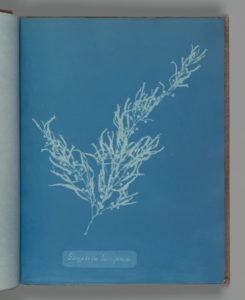
Anna Atkins, “Sargassum bacciferum,” ca. 1853. Met Museum: public domain image https://www.metmuseum.org/art/collection/search/291504
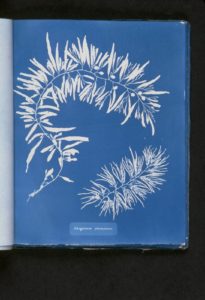
Anna Atkins, “Sargassum plumosum.” New York Public Library: public domain image. https://digitalcollections.nypl.org/items/510d47d9-4af6-a3d9-e040-e00a18064a99
While histories of photography marginalized Atkins for many generations, there have been a number of exhibitions and retrospectives of her work in recent years to rectify that injustice. A purely vocational history of coasts, or one that subsumes all considerations into business history, would not have stopped to take notice of Anna Atkins either.
Changing times
Lingard closes her book with a chance encounter at the water’s edge. A woman uncannily resembling her, ambling observantly along the shore from the opposite direction, winds up entering into conversation about new developments in the region, but only to offer this grim rejoinder: “But the planet’s fucked! … It’s all too late. And anyway there are far too many of us…”[30]
It’s an intentionally dissonant and provocative ending. The closest, most patient observation may not avail us much in this particular century. After hundreds of pages of thoughtful consideration of layers, textures, and deposits, is the final residuum a patina of hope mixed with hopelessness? Perhaps it is the literature of place that is, itself, oddly out of place in our era, like an art critic standing close to inspect a painting in a museum that’s burning down.
Lingard herself, through her concluding chapter and updates through her very active Twitter account, does suggest some paths forward. A press release just last month announced that the British government, in coordination with the devolved government in Scotland, had agreed to considerably expand the size of the Marine Protected Area centered around the Solway. And surely tidal energy has a place if we are to move toward carbon neutrality in our lifetimes. While a tidal barrage is not an environmentally friendly choice, she notes that loosely anchored turbines or even floating ones (“likely to be much less damaging to estuaries and their edges”) are becoming a viable option.[31]
Yet perhaps what the Solway also offers us is a chance to shake loose from the round of Zoom meetings, the anxious gyrations of texting and social media, the habitual grooves and ruts of our present century. Lingard’s discussion of the many uses of red sandstone unexpectedly turns up the eighth-century Anglo-Saxon cross at Ruthwell, carved with runes and Latin words, along with neatly executed scenes from the New Testament (“Mary Magdalen washing Christ’s feet with her hair”).[32] An even more numinous passage concerns the custom of locating shrimping grounds using distinctive “boulders and scaurs” as wayfinding marks. The stones’ names “go back a terrible long time,” as her informant explains, passed down in an oral tradition, so it is debatable whether “Nellie and Pintle, High Netherma and Maston… Archie and Popple” are even the correct spellings.[33] There is, occasionally, a moment in The Fresh and the Salt that offers an intimation of deep time, and indeed a suggestion of a whole alternative world that could run at a different pace, on different priorities, to different ends.
Haaf net fishing is a Viking legacy now unique to the Solway. This 1942 British Pathé featurette (less than two minutes long) captures the basics, but do not miss the series of short videos produced by Annan Common Good, which can be found on their haaf net page. These include footage that captures not only the vast sheets of gleaming water that form the surrounding panorama, but the decidedly pre-industrial tempo of the activity. This more atmospheric haaf-netting documentary is also viewable in its 25-minute entirety here.
The fishermen express consternation that their slow-paced, low-impact fishery has been the target of increasing vigilance from government conservation agencies. The thousand-year heritage of haaf net fishing may become an accidental casualty of larger changes brought about by environmental deterioration elsewhere. Yet, as Lingard notes, “the main players, who need to be in this to win, are of course those charismatic, well-travelled animals, the returning salmon, both the adults and the younger grilse.”[34]
Perhaps balance and harmony are overused tropes in nature writing, yet I admire the clarity that Lingard brings to the relationships between creatures and places, people and places, and indeed to the relationship between one place and another. It takes a certain delicacy of language to tease this out. The peat bogs (“or, more poetically, Mosses or Flows”) are close neighbors to the salt marshes.[35] If, as she proposes, “the mud and the marsh are inseparable,” this might be rendered in the managerial jargon to which we are so accustomed (“they are the integrated margins of the estuary”) or in a more homely and memorable expression: “It is as though they are holding hands to keep their foothold on the edge of the land.”[36]
Notes
[1] Ann Lingard, The Fresh and the Salt: The Story of the Solway (Edinburgh: Birlinn, 2020), 235.
[2] Lingard, Fresh, 236, 42, 227.
[3] Lingard, Fresh, 193.
[4] Lingard, Fresh, 23.
[5] Lingard, Fresh, 33.
[6] Lingard, Fresh, 192.
[7] This theme is explored in Steve Mentz, “Brown,” in Prismatic Ecology: Ecotheory Beyond Green, ed. Jeffrey Jerome Cohen (Minneapolis: University of Minnesota Press, 2013), 193-212.
[8] Lingard, Fresh, 39, 163.
[9] Lingard, Fresh, 109, see also 114.
[10] Lingard, Fresh, 259.
[11] Gerard Manley Hopkins, “That Nature is a Heraclitean Fire and of the comfort of the Resurrection,” https://hopkinspoetry.com/poem/that-nature-is-a-heraclitean-fire/ , accessed December 11, 2020.
[12] Lingard, Fresh, 203.
[13] Lingard, Fresh, 3.
[14] Lingard, Fresh, 222.
[15] Lingard, Fresh, 134.
[16] Lingard, Fresh, 30, 31, 46, 205.
[17] Lingard, Fresh, 90.
[18] Lingard, Fresh, 141.
[19] Lingard, Fresh, 128.
[20] Lingard, Fresh, 175.
[21] Lingard, Fresh, 175.
[22] Lingard, Fresh, 56.
[23] Lingard, Fresh, 175.
[24] Lingard, Fresh, 225.
[25] Lingard, Fresh, 54.
[26] Lingard, Fresh, 185.
[27] Lingard, Fresh, 82-84.
[28] Lingard, Fresh, 90-91.
[29] Lingard, Fresh, 92.
[30] Lingard, Fresh, 276.
[31] Lingard, Fresh, 273.
[32] Lingard, Fresh, 169.
[33] Lingard, Fresh, 243.
[34] Lingard, Fresh, 233.
[35] Lingard, Fresh, 132.
[36] Lingard, Fresh, 131.

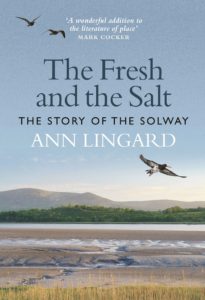

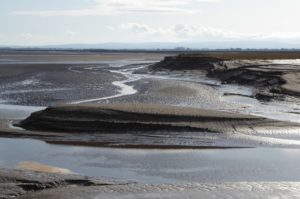
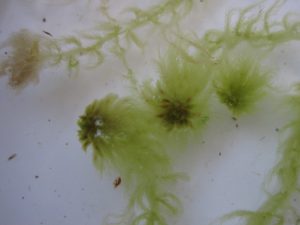
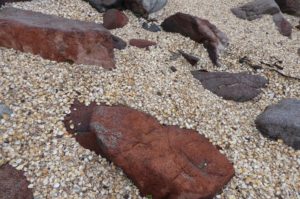
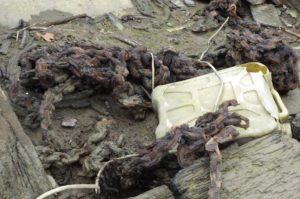
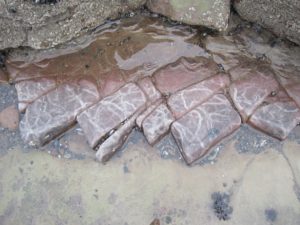
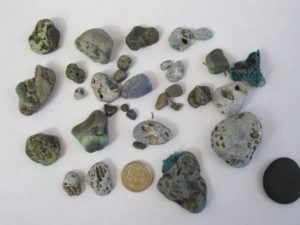
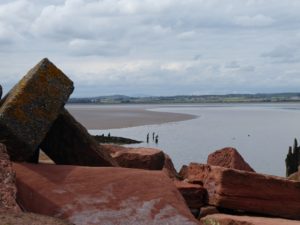
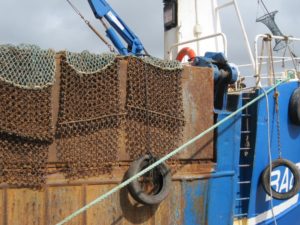
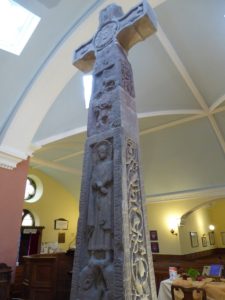









Comments are closed.